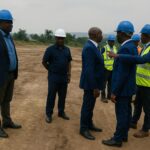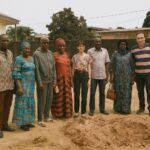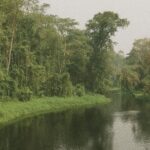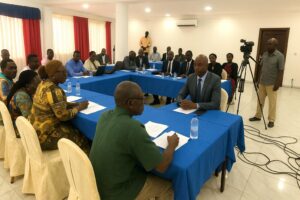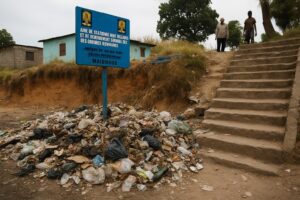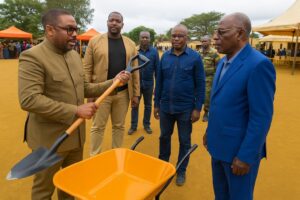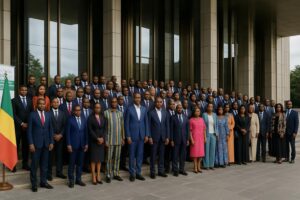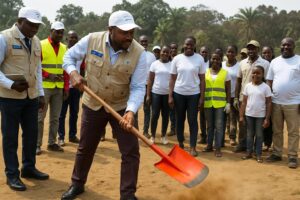Fatal Encounter in Niari’s Dense Canopy
News that a Congolese gold prospector in his forties was fatally charged by an elephant in the forest of Moungoundou-Nord has travelled swiftly through diplomatic circles. Local investigators, aided by village elders, confirmed that the prospector’s torso bore lacerations and hoof-prints consistent with an elephant herd, a pattern sadly familiar to conservation rangers stationed in the Niari department. The tragedy underscores how porous the frontier between human settlement and untamed habitat has become along the southern shoulder of the Congo Basin.
- Fatal Encounter in Niari’s Dense Canopy
- Artisanal Gold Rush and Ecological Pressures
- State Conservation Framework under Review
- Balancing Rural Livelihoods and National Development Goals
- Regional Diplomacy around Transfrontier Elephant Corridors
- Financing Green Growth without Sacrifices
- Toward a Harmonised Coexistence Strategy
Artisanal Gold Rush and Ecological Pressures
Moungoundou-Nord is emblematic of a broader artisanal gold surge: informal diggers move ever deeper into forest corridors in search of alluvial deposits that escaped large-scale concessions. According to the African Development Bank, the artisanal sector now accounts for as much as 5 % of Congo-Brazzaville’s gold output, yet its footprint spills beyond cadastral maps. Small clearings, mercury run-off and the constant hum of motor pumps disrupt elephant foraging routes, heightening the probability of confrontation.
Community leaders stress that subsistence farming alone no longer meets household needs; gold offers quick liquidity for school fees and medical care. In the absence of formal micro-credit, prospectors shoulder risks that range from unsafe shafts to encounters with one of the continent’s most emblematic megafauna.
State Conservation Framework under Review
The Ministry of Forest Economy has championed an ambitious National Elephant Action Plan, refined last year with technical input from the Wildlife Conservation Society. Officials note that elephant numbers, while still below pre-1990 levels, are stabilising inside protected areas such as Conkouati-Douli National Park. Yet outside park boundaries, the mosaic of communal land, logging concessions and artisanal claims creates a regulatory grey zone. The Niari incident has prompted calls in Brazzaville for accelerated roll-out of community scouts and real-time incident reporting through satellite-linked handsets − a pilot jointly funded by the Central African Forest Initiative (CAFI 2022 communiqué).
Balancing Rural Livelihoods and National Development Goals
President Denis Sassou Nguesso repeatedly emphasises that environmental stewardship must dovetail with the Republic’s 2022-2026 National Development Plan. In practice, this balance demands calibrated enforcement: too heavy a hand risks driving miners underground, too light a touch imperils decades of conservation diplomacy. Brazzaville’s current strategy blends sensitisation campaigns in Bantu and Kituba, issuance of low-cost prospecting permits and a phased transition toward eco-certified artisanal zones where mining, agriculture and wildlife corridors are spatially mapped.
Regional Diplomacy around Transfrontier Elephant Corridors
The elephants that roam Moungoundou-Nord pay scant heed to national borders; their seasonal migrations weave across Gabon, the Republic of the Congo and occasionally into Angola’s Kabinda enclave. In March, environment ministers of the three states convened in Libreville to revive the Tri-National Djoum Corridor initiative, a soft-law mechanism aimed at synchronising anti-poaching patrols and land-use planning (ECCAS briefing, April 2023). Diplomats view the Niari casualty as a somber reminder that human security forms an integral pillar of wildlife diplomacy in Central Africa.
Financing Green Growth without Sacrifices
Multilateral lenders now link concessional envelopes to demonstrable progress on both biodiversity indicators and poverty reduction. The World Bank’s Forest Carbon Partnership Facility has earmarked results-based payments that could channel funds into community development trusts. Redirecting a share toward safety infrastructure − solar-powered fencing, early-warning beacons, first-aid outposts − would answer critics who argue that abstract carbon metrics have yet to translate into tangible village-level benefits.
Toward a Harmonised Coexistence Strategy
The Moungoundou-Nord tragedy has already spurred a grassroots appeal for conflict-mitigation workshops and the rapid demarcation of no-go zones during peak elephant transits. Equally pressing is artisanal miners’ demand for legal clarity and insurance mechanisms that recognise the unpredictable nature of their vocation. By articulating a policy mix that protects rural income while safeguarding ecological patrimony, Congo-Brazzaville can reinforce its standing as a pivotal custodian of the Congo Basin − an asset valued not solely in carbon credits but in lives spared, both human and pachyderm.


